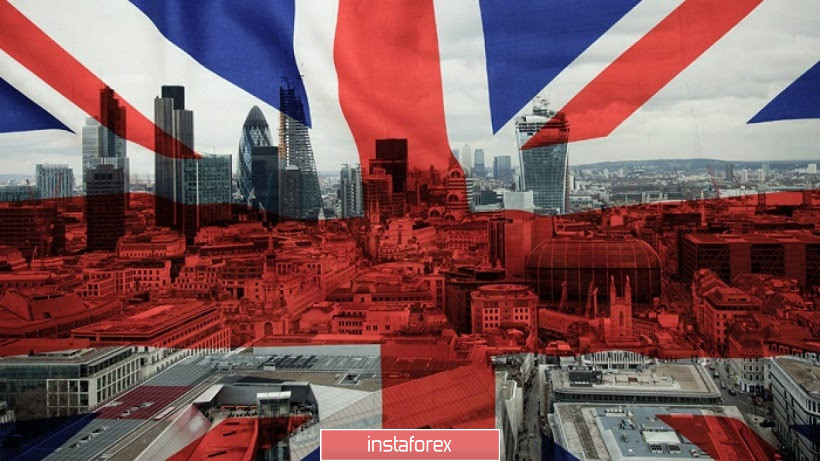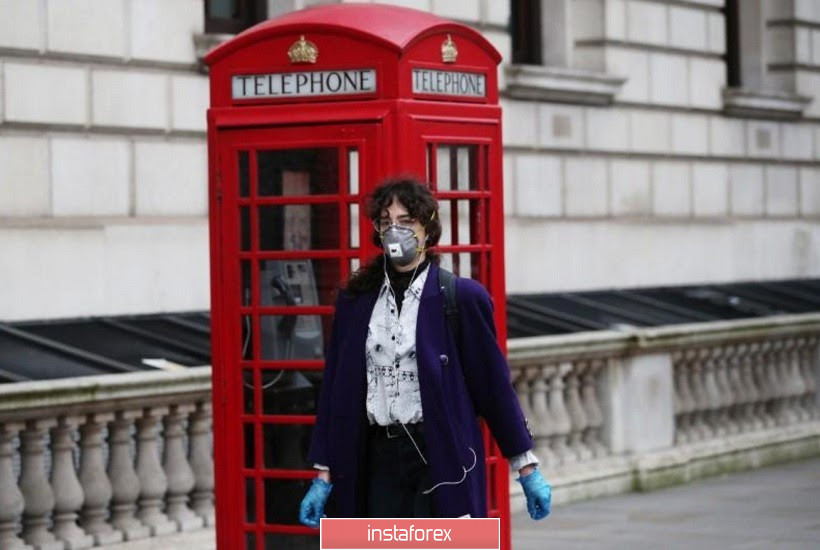The pound-dollar pair is currently growing due to three main fundamental factors. First, there is a general risk appetite in the market after a multi-week period of anti-risk sentiment. Secondly, the British pound received support from the Bank of England – despite its dovish attitude, the regulator did not change the parameters of monetary policy, taking, in fact, a wait-and-see position. Third, the upward dynamics of GBP/USD is also due to the weakness of the US currency. The devastating data on the labor market in the United States stunned traders – a huge increase in the number of applications for unemployment benefits (from 280 thousand to 3 million) was a harbinger of failed Non-Farms. And all this happened at a time when the United States ranked first in the world in the number of cases of Covid-19, ahead of even China with its one and a half billion population.

But let's start with yesterday's meeting of the English regulator. On the one hand, traders were prepared for a wait-and-see attitude, after unscheduled decisions to lower the interest rate and raise the volume of the government bond purchase program. However, some analysts did not rule out that the BoE may again expand this program in response to recent events in the UK (and in the world as a whole). London was the last in Europe to catch on about the introduction of quarantine measures, so now it is reaping the fruits of its slowness: yesterday, the number of deaths from Covid-19 increased to 578, more than 12,000 Britons were infected - including the heir to the throne, 71 year-old Prince Charles. Moreover, according to the modeling of researchers at the University of Oxford, the number of cases in the country is much, much higher.
However, the British regulator did not succumb to panic, although it warned that it may increase the volume of purchases of government bonds at one of its subsequent meetings "or in an unscheduled manner." This position was supported by all members of the Committee - the votes for maintaining the status quo were distributed 9-0, that is, in full accordance with the forecast. It should be noted that the rhetoric of the accompanying statement was pessimistic – according to the regulator's members, the negative consequences of the epidemic will affect the country's economy for a long period of time, while the situation in the country's financial sector and the global economy has already become "more tense". The BoE has allowed a sharp drop in manufacturing and consumer activity, while unemployment may sharply increase. Summarizing the above, the regulator tried to add "a spoonful of honey to the barrel of tar": despite the possible decline in March inflation to below the one percent level, in the future, this indicator can recover quickly enough, due to a significant devaluation of the pound. The central bank also noted that the economic shock from the coronavirus is temporary.
However, the horror stories of the BoE did not frighten GBP/USD traders: firstly, the rhetoric of the regulator's members was too obvious, and secondly, market participants were aware that the regulator had virtually no room for maneuvers, therefore, aggressive reaction from the central bank is not necessary. In early March, Andrew Bailey announced that the central bank could reduce the interest rate "approximately to 0.1%." At the same time, he virtually ruled out the option of reducing to the negative area - in his opinion, negative interest rates will have a negative impact on the UK banking sector. In other words, now the regulator can only increase the volume of purchases of government bonds. Judging by the results of the March meeting, the central bank has so far saved this lever of influence for the worst of times.

In general, the Bank of England's wait-and-see position has helped strengthen the pound across the market, including against the dollar, which in turn is under pressure from negative fundamental factors. Yesterday, Federal Reserve Chairman Jerome Powell made it clear that the regulator is ready to further soften monetary policy, against the background of a possible recession of the US economy. He also voiced rather pessimistic forecasts, putting pressure on the greenback. In his opinion, it will be possible to curb the epidemic not earlier than in the second half of this year. His words came at a time when the United States came out on top in the world for the incidence of Covid-19.
Thus, Powell actually announced a further rate cut, while the latest US macroeconomic reports gradually outline the scale of the economic disaster. Against this background, the pound looks more attractive, although the upward dynamics of the GBP/USD pair is primarily due to the weakening of the dollar.
The pound also received indirect support due to the growth of risky sentiment in the market. Yesterday it became known that the G20 countries intend to coordinate measures in the economic sphere that are being taken to combat the consequences of the pandemic. The communique following the summit, which was held in an online format, says that the G20 countries are ready to invest more than $5 trillion in the global economy as part of a focused fiscal policy. This money will go towards "countering the social, economic and financial consequences of the epidemic." Such intentions improved general sentiment in the markets, but the demand for the dollar, which has recently acted as the main defensive asset, has declined.
Thus, at the moment there are all prerequisites for the further growth of GBP/USD. However, long positions should be considered when overcoming the resistance level of 1.2330 (the middle line of the Bollinger Bands indicator, which coincides with the Kijun-sen line on the daily chart). In this case, we can expect a larger scale price growth up to the 25th figure in the medium term.





















